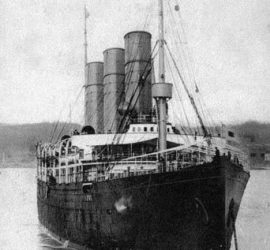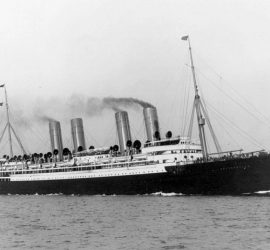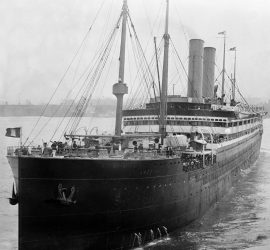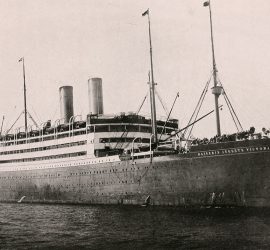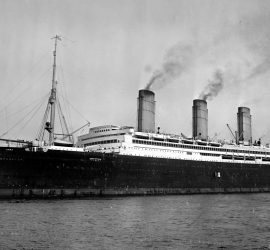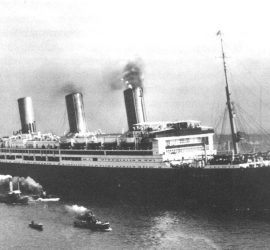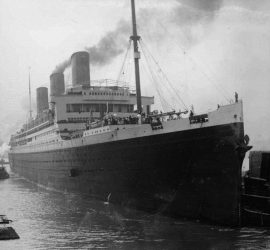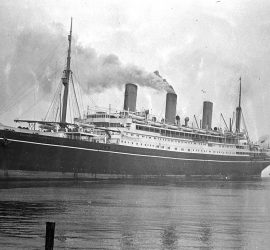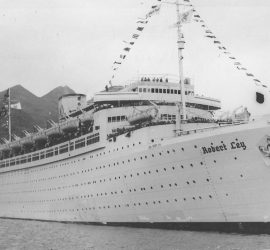1898 – 1916 / Also known as Burdigala / Intended as another Norddeutscher Lloyd speed champion, the Kaiser Friedrich failed to meet requirements and languished for many years. She eventually found her place as a French ship on the South America run, but was sunk by a mine during World War I.
hapag
1900 – 1925 / Also known as Victoria Luise and Hansa / An early German speed champion, the Deutschland suffered technical issues which affected her popularity. Having been used as a cruise ship in the years prior to World War I, she was eventually sent to the breakers.
1905 – 1957 / Also known as America (I) / A German competitor in terms of size and luxury, the Amerika was seized and used as an allied troop transport during World War I. Her post-war career was under the American flag, but as her age caught up with her, she was finally sent to the breakers.
1906 – 1931 / Also known as Empress of Scotland (I) / Entering service as the largest ship in the world, the Kaiserin Auguste Victoria focused on size and comfort rather than speed. Sailing in HAPAG livery for eight years, the ship was transferred to Canadian-Pacific after World War I but was done in by fire in late 1930.
1913 – 1938 / Also known as Berengaria / The first of Germany’s great pre-war trio, their defeat in World War I saw the ship transferred to Cunard ownership and given a new name. She flew the British flag for the rest of her career, and was sold to Jarrow shipbreakers in 1938.
1914 – 1938 / Also known as Leviathan / The second ship of the great HAPAG trio, Vaterland was seized and used as the allied troop transport USS Leviathan during World War I. Handed over to the United States Lines after the war, she became the company flagship and the largest ship in the US merchant fleet.
1922 – 1940 / Also known as Bismarck / Originally built as the final and largest ship of HAPAG’s pre-WWI trio, she never saw service as a German ship. Awarded to White Star after the war, she became their flagship Majestic.
1922 – 1952 / Also known as Admiral von Tirpitz, Tirpitz, and Empress of China (II) / Built and intended as a ship of the Hamburg-Amerika Line, this ship was yet another that was handed over to Britain following World War I. Joining the Canadian-Pacific Line, she then had a long career both as a civilian vessel and a troop transport.
1939 – 1947 / Another ship of the ‘Kraft durch Freude’ project, the Robert Ley did not see much use as a cruise ship before World War II broke out. Utilised mainly as an accommodation ship, she was bombed in the port of Hamburg in the spring of 1945 and sent for demolition once the war was over.

